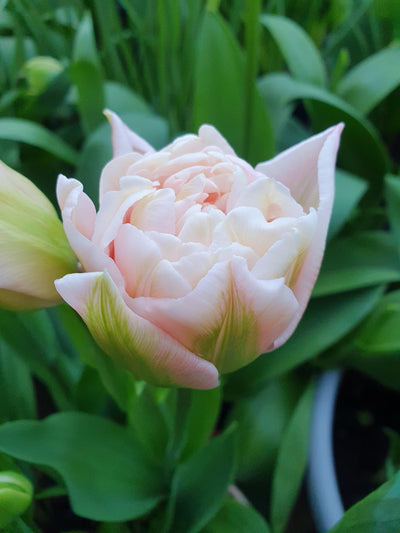Cut flowers throughout the year
There are flowers to gather at all times of year in the garden for the most diligent and organised of cut flower growers, but at no point in all the seasons is there such bounty and such a myriad of choice as late summer. Some are reluctant to detract from their outdoor displays, but with careful planning it is possible to have glorious colour both indoors and in the garden. After all, what could be better than truly immersing yourself in your garden by bringing it indoors as well as out?

Opting to grow your own is the sustainable choice for cut flowers, considering so many of the flowers provided in supermarkets are imported from abroad.

By designating a specific area of your outside space to nurturing and raising your own cut flowers, you not only have plenty to provide for your home (and family and friends) but you also refrain from detracting from your main border or container displays. For example, a pot tucked away on a balcony could be used to grow annuals for cutting; or a whole bed, border or even garden gives more room for establishment for those with more outside space. By growing annuals, perennials, bulbs and foliage to use in floral arrangements you not only provide a stop-off point for pollinators, you also provide a diverse variety of stems to arrange within your home.

Late summer is the peak of colour and abundance in the cut flower garden. While they may be past their best, roses and perennials persevere providing not only colour, but structure and scent to any arrangement. It is the moment for half-hardy annuals like cosmos, which in a warm autumn can continue to produce flowers right through to November. However, the epitome of all flowers for cutting must be the dahlia. They come in such a vast array of colours, shapes, forms and sizes it is impossible to find one that is unsuited to your taste. With a vase life of around 5 days, they work perfectly mixed with foliage, annuals or perennials in an arrangement - or can look just as wonderful and perhaps more impactful on their own.

Harvesting is imperative for the prolonging of the vase life of a cut flower. It is necessary to place the stem straight into a bucket of water after picking and ensure to choose flowers which are open, yet not fully so. Some choose to sear the stem ends in boiling water, and others add food to the water the plants will inhabit. However, it is important to make certain that this stock of flowers for harvesting is available all throughout the year.
As we transition into autumn dahlias will continue to energise and animate any cut flower arrangement or border. They look beautiful paired with the rust-coloured foliage of many shrubs and trees as well as the structurally astounding seedheads provided by grasses: miscanthus, pennisetum and stipa all compliment perfectly. Winter can be a time of scarcity in the garden, but for cut flower growers this is when form and structure becomes centre stage. Perennials, grasses or annuals dried earlier in the season make an unusual yet everlasting winter bouquet; frosted branches of trees and berries from shrubs like ilex aquifolium (common holly) are bright and uplifting. Spring is heralded by the arrival of the bulbs. From the first snowdrop burrowing out from beneath the snow, to the sweetly scented narcissi and flamboyant tulips, there is plenty to be planted to ensure that the cut flower season is extended right the way through the year.

And let us not forget the joy of the first bunch of sweet peas in late spring. To hold in your hand the small but mighty explosion of colour, to smell the sweet scent of June and to think “I grew these from seed.” Fewer things in life are more rewarding.





Leave a comment